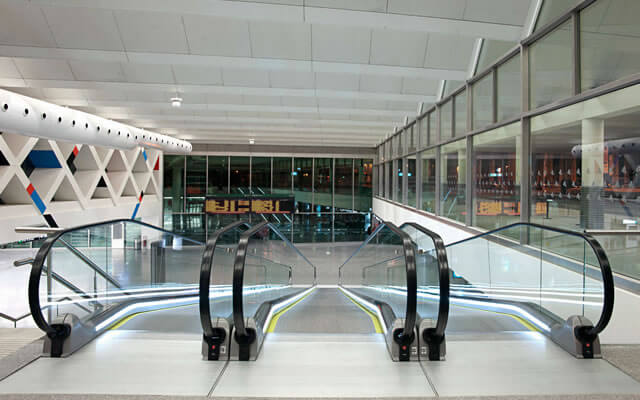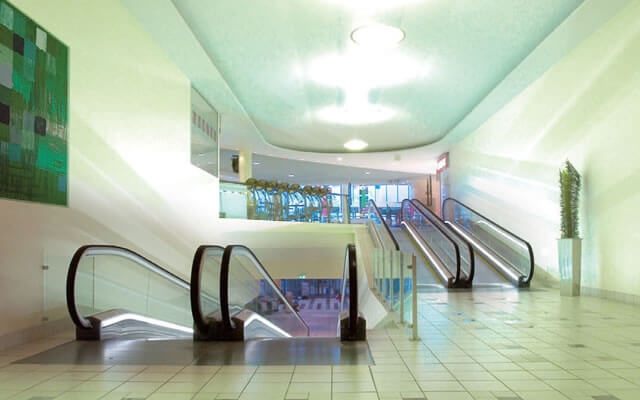Moving walkway
A moving walkway is a slow moving conveyor mechanism that transports people across a horizontal or inclined plane over a short to medium distance. Moving walkways can be used by standing or walking on them. They are often installed in pairs, one for each direction.
An inclined moving walkway is a type of vertical transportation used in airports and supermarkets to move people to another floor with the convenience of an elevator (namely, that people can take along their suitcase trolley, or baby carriage) and the capacity of an escalator.


Moving walkways are built in one of two basic styles:
- Pallet type: a continuous series of flat metal plates join together to form a walkway – and are effectively identical to escalators in their construction. Most have a metal surface, though some models have a rubber surface for extra traction.
- Moving belt: these are generally built with mesh metal belts or rubber walking surfaces over metal rollers. The walking surface may have a solid feel or a “bouncy” feel.
Both types of moving walkway have a grooved surface to mesh with comb plates at the ends. In addition, nearly all moving walkways are built with moving handrails similar to those on escalators.
Pallet-types consists of one-piece, die-cast aluminum pallets. Example dimensions are: widths (between balustrades): between 800 mm and 1200 mm, with a speed of 0.5 meters per second, powered by an AC induction motor.
Basic Specifications
- Installation : Indoor
- Working hours: 16 hrs./day
- Horizontal length: Max. 150m (0°)
- Inclination: 0° – 6°/10° 12°
- Pallet width: 800/1000mm (10° – 12°) | 1000/1200/1400mm (0°)
Speed :0.5 m/s - Capacity: 6750/13500 pers/hr.
- Power Supply: AC 3 -phase, 50 or 60 HZ
- Lighting supply: AC single-phase, 50 or 60 HZ
 English
English




